Monday, September 26, 2016
Rajasthan, the “land of the Maharaja,” is an exotic desert state in western India. It’s capital,
Jaipur, is a historic walled city famous for enchanting “pink” fortresses and palaces, and royal dynasties. Here in the “Pink City,” I got a taste of the opulent lifestyle of the Maharaja, the once powerful rulers of
Rajasthan, by staying in a royal family home.
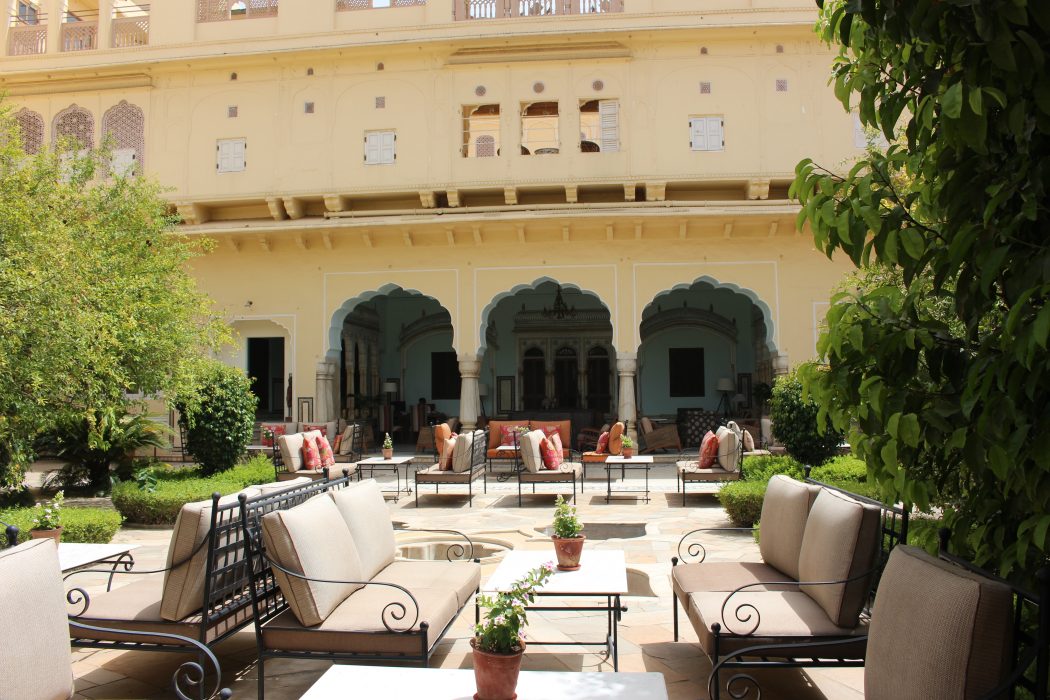
“Rajasthan has many small boutique hotels that were the residences of noble families,” said Vikas Abbott, managing director,
Vasco Travel, India’s largest family-run, inbound travel company. “Now they’ve converted them into nice heritage hotels. It’s really a different experience and these hotels give you that character of India.”
Jaipur was founded in 1727 by Maharaja Sawai Jai Singh II, when this area of India comprised Princely states. Men wore silk robes, jewels and colourful turbans (some continue the tradition); and women wore elegant sarees. It’s a place I have always been draw to.

This May, I traveled to Jaipur after speaking at the
Women’s Economic Forum in Delhi, for some creative inspiration. In the midst of the desert, despite a heat wave (47C), I found an urban oasis: the
Samode Haveli (“palace”), a heritage luxury hotel built nearly two centuries ago as the residence for the rulers of Samode, Rajasthan. Today, it is owned by Mr. Raghvendra Singh and his brother, descendants of the rulers, who inherited the royal residence.
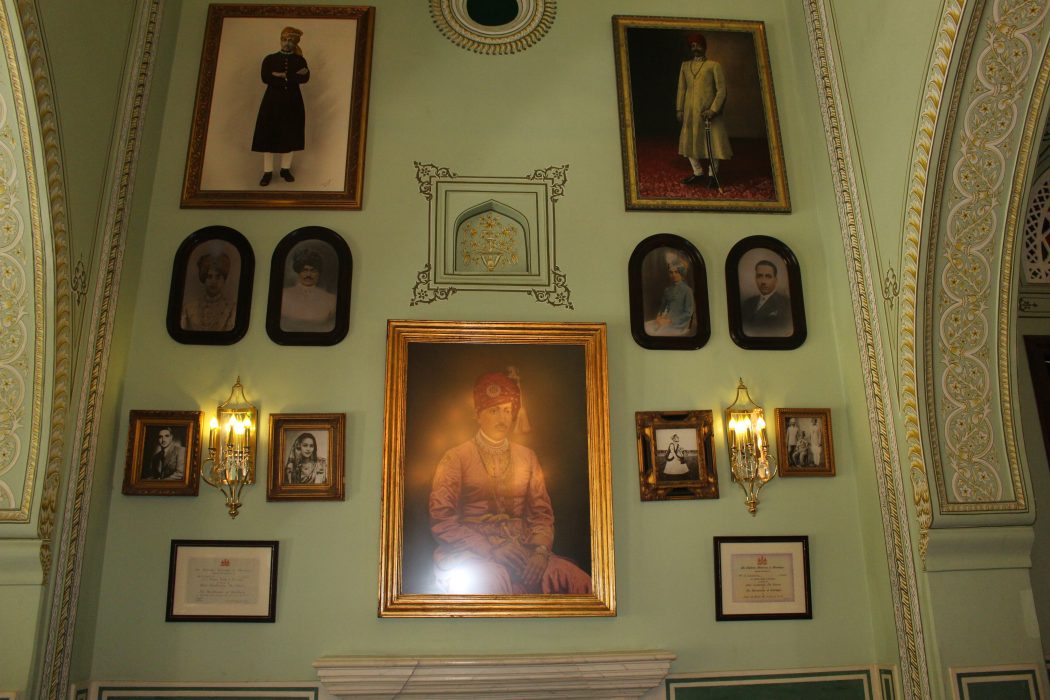
Faced with the challenges that come with inheriting a royal residence, such as finances and maintenance, in the ‘80s, the Singhs decided to convert their property into a luxury boutique hotel. “I had a vision and it turned out to be good for us,” says Mr. Singh, a distinguished and modern businessman. The Singhs were ahead of their time, when many other families who inherited royal residences also faced similar challenges.
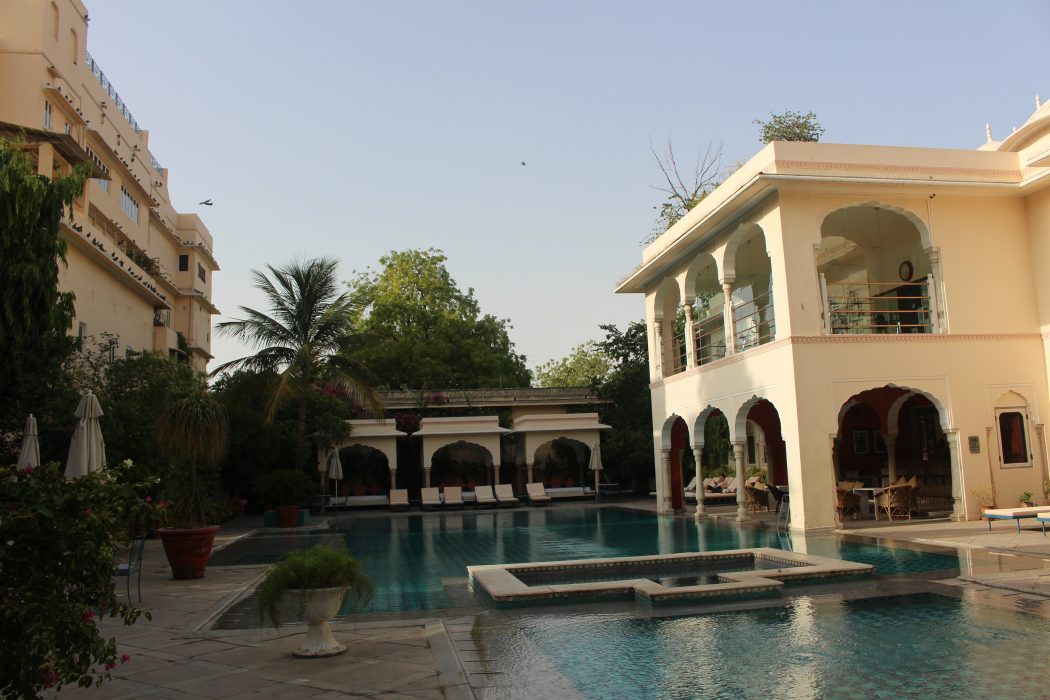
The royal apartments were turned into deluxe rooms and suites, and each has a unique and distinctive character, while maintaining contemporary amenities to meet the needs of the modern-day traveler. The rooms are situated around courtyards, gardens and a stunning swimming pool. There is even a modern spa and fitness area. Meals are served in opulent rooms with chandeliers and paintings of the family’s Maharaja ancestors (note: I must say my favourite meal was stuffed tandoori bell peppers with potato and dried fruit and cheese).
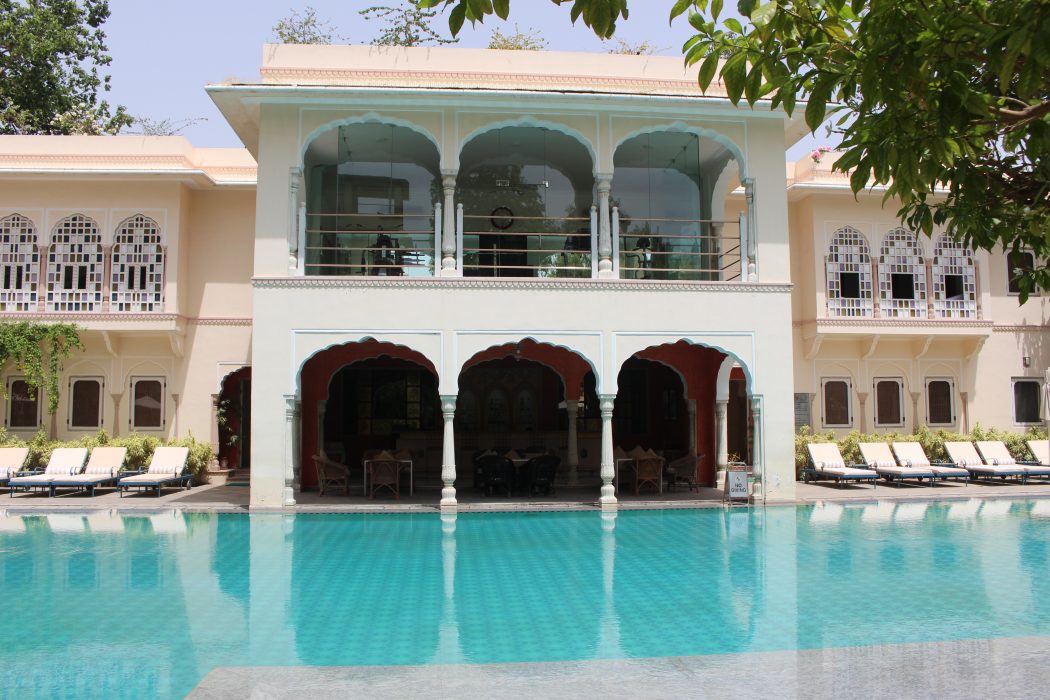
The Singh family (Raghvendra, his wife and two children) resides in a private residence in the complex; and expansion plans are underway for 50 more rooms.
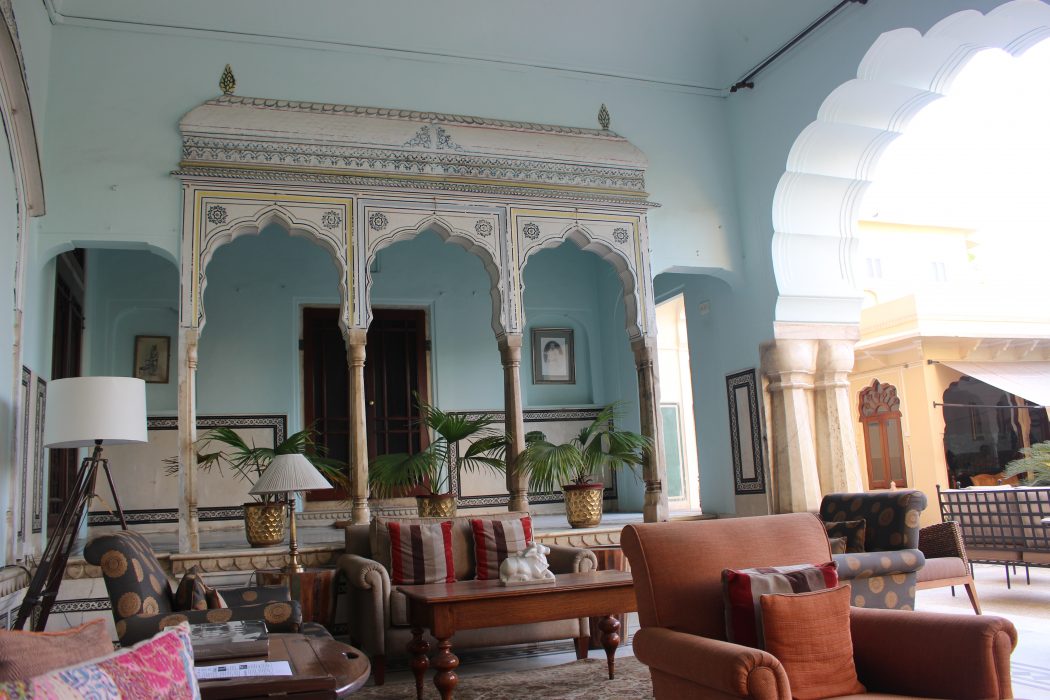
It was like staying in a palace and I felt like a queen.
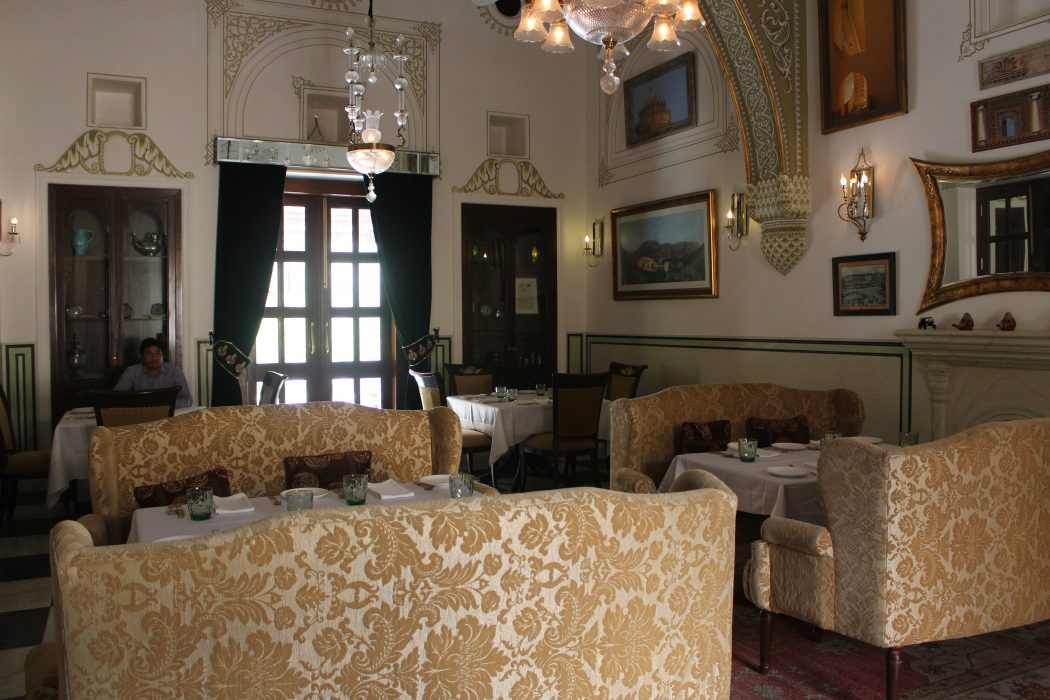
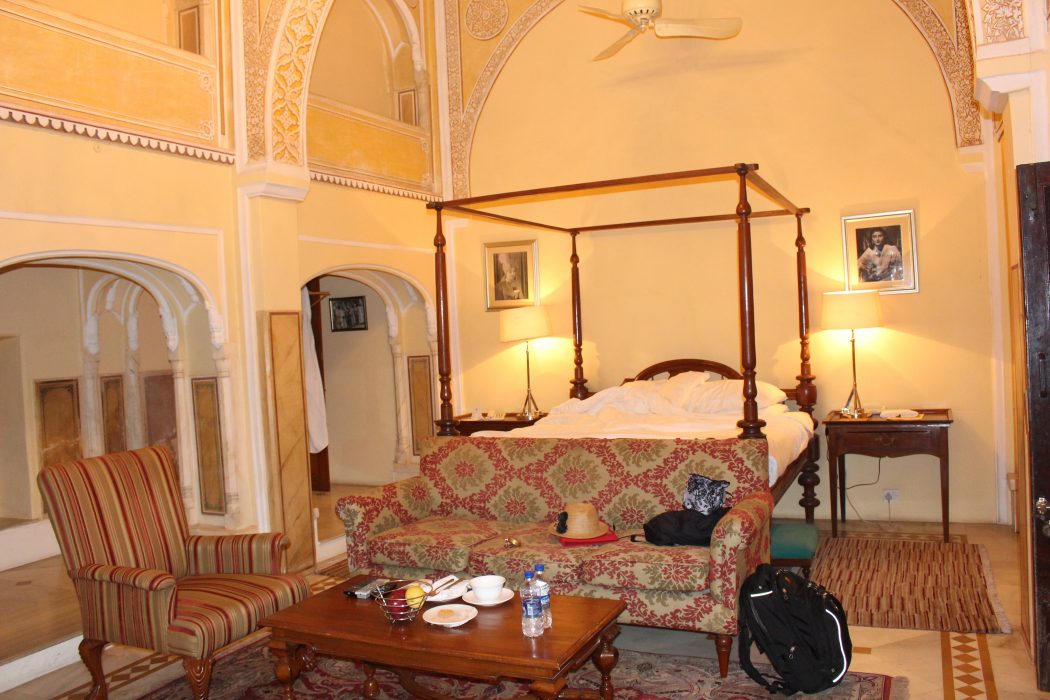
In addition to staying in a royal home, there are many sites in Jaipur to visit to get a taste of the life of the Maharaja:
1. Amber Fort: A popular attraction at this UNESCO World Heritage Site is to ride an elephant to the gate. Located 12 km north of Jaipur in the town of Amer,
Amber Fort (aka Amer), is a 16
th century architectural marvel made of red sandstone and marble. Its Palace of Mirrors has beautiful mirrored ceilings; and there are several courtyards and “apartments” for each of the royal women (the king had 12 queens), and a lovely garden and temple.
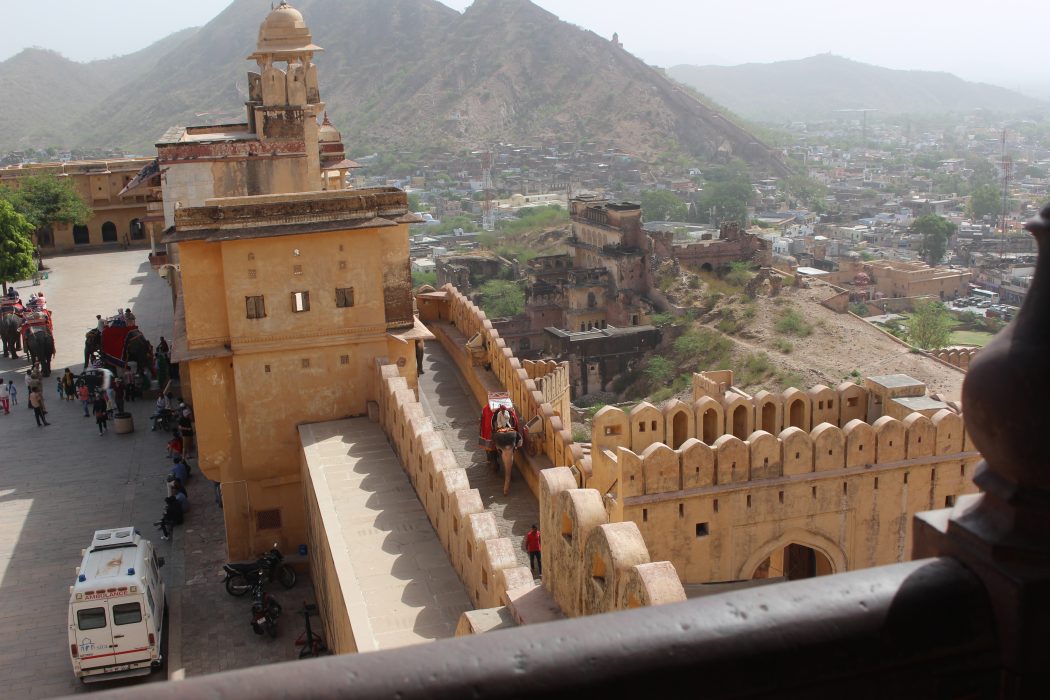
Underground tunnels connect to nearby
Jaigarh Fort, part of the same complex, that was built as a military fort to protect Amber Fort and palace. Renowned for the world’s largest cannon on wheels and an intriguing story of hidden treasure.
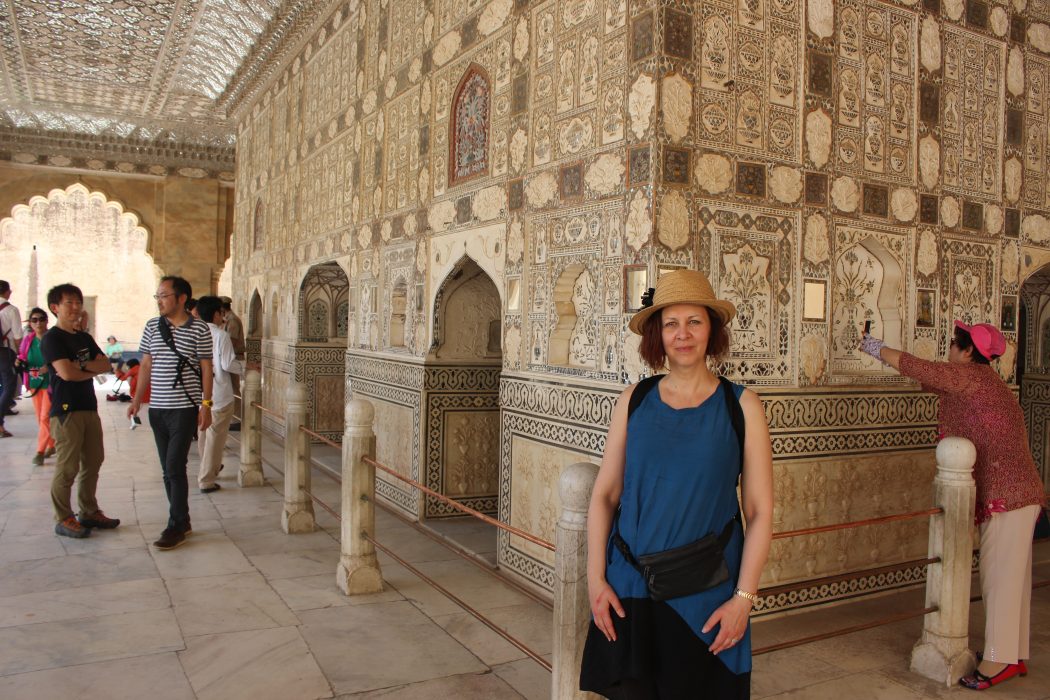
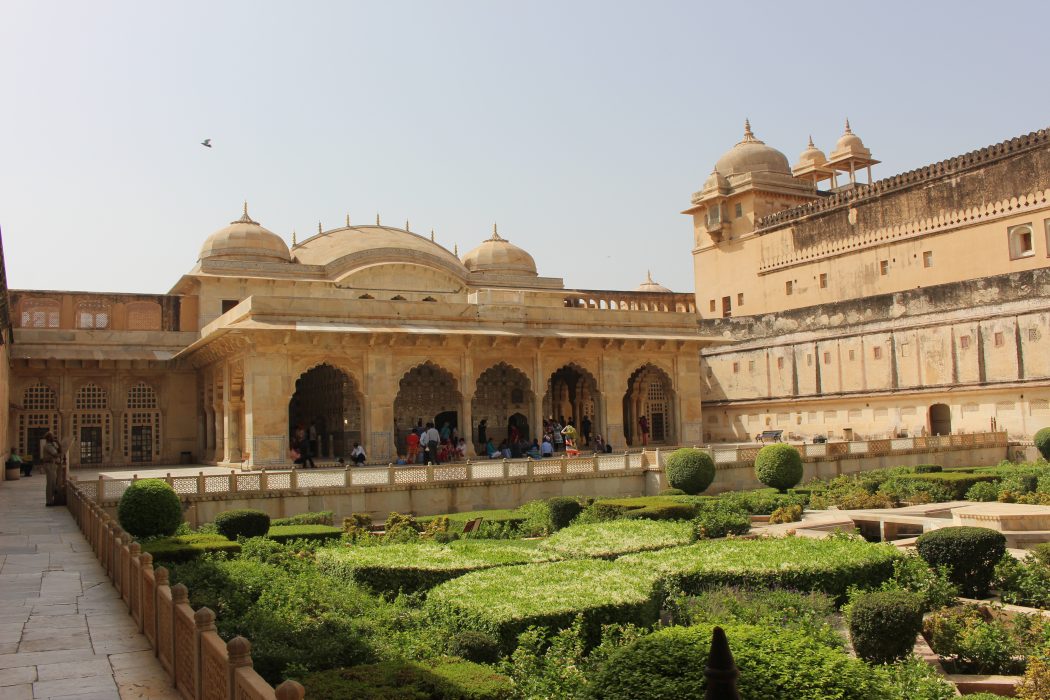
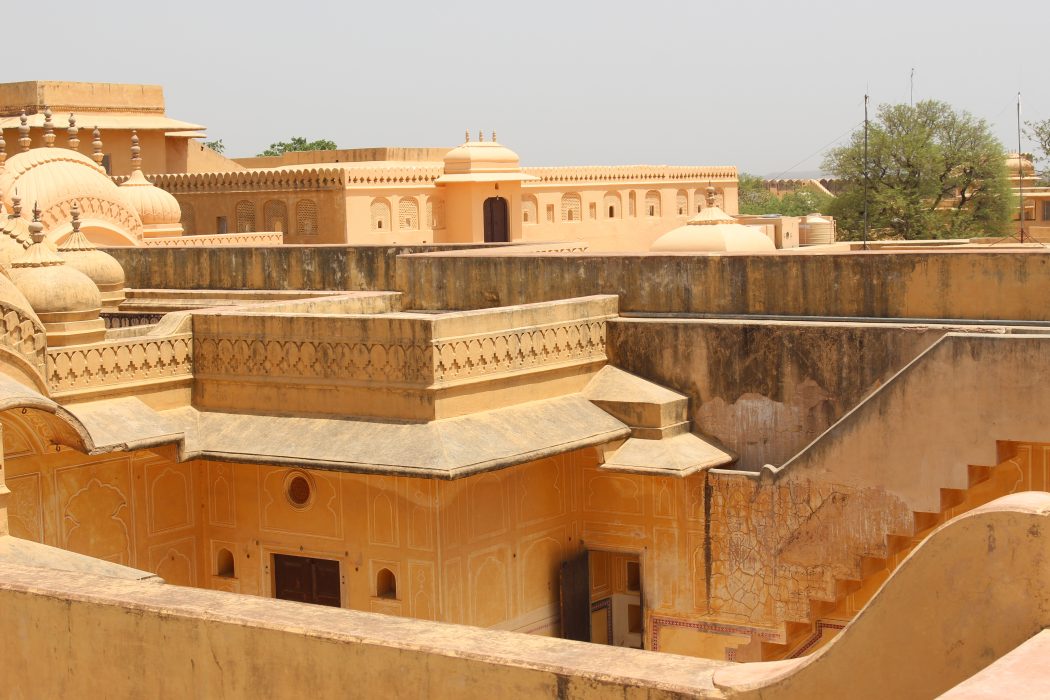 2. Naharghar Fort
2. Naharghar Fort: the “abode of the tigers” was built at the edge of the Aravalli Hills, and offers a must-see view overlooking the Pink City.
3. Hawa Mahal “Palace of Winds:” a 5-storey façade built for royal women to watch processions and street festivals below through windows covered with lattice, as they had to be hidden from sight.
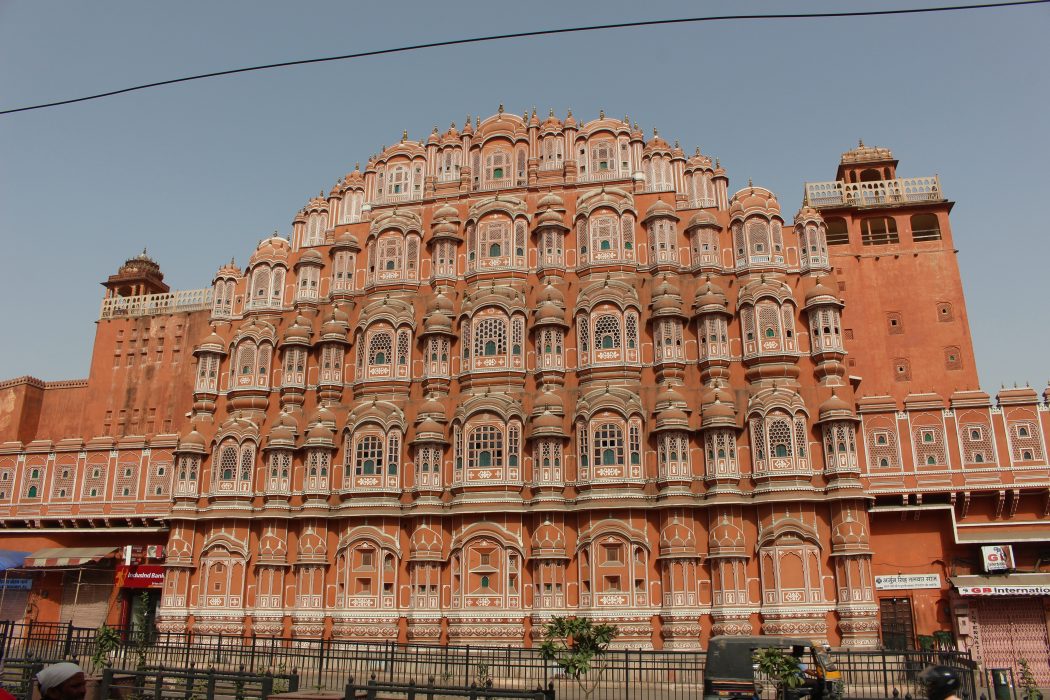 4. Maharaja’s City Palace
4. Maharaja’s City Palace: a former royal residence that is now part museum with a small portion used by Jaipur’s current royal family. The museum has a variety of weapons, textiles, and clothing of past kings. In the courtyard, music students attend flute lessons.
5. Jantar Mantar astronomical observatory: this UNESCO world heritage site is one of the largest stone and marble-crafted astronomical observatories in the world, built 1728-1734 by Maharajah Sawaii Jai Singh II.
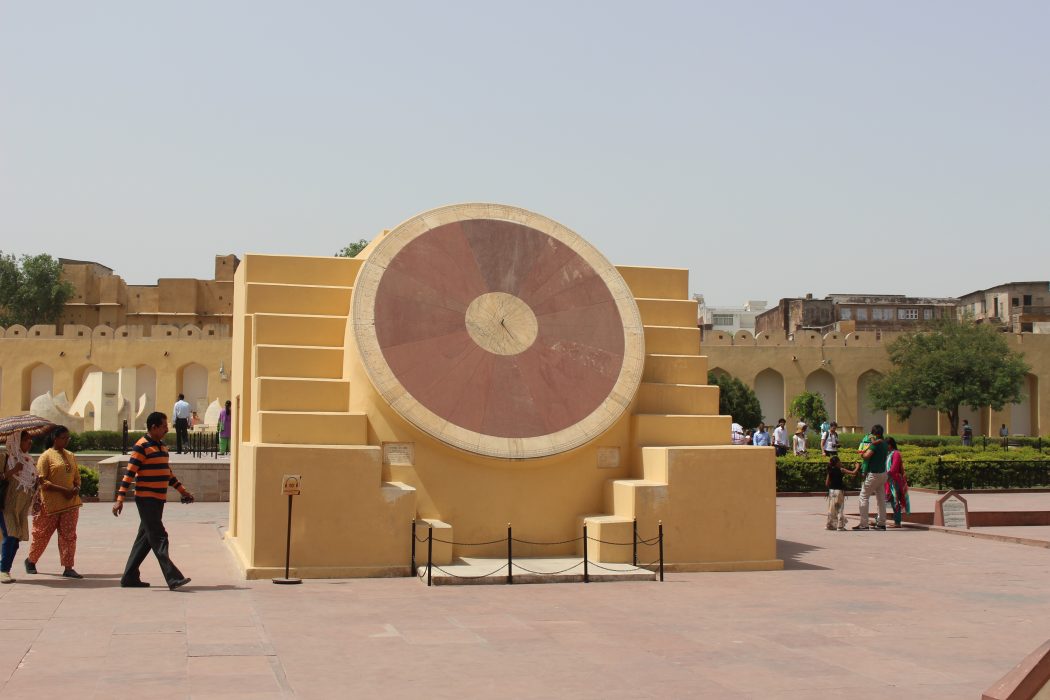
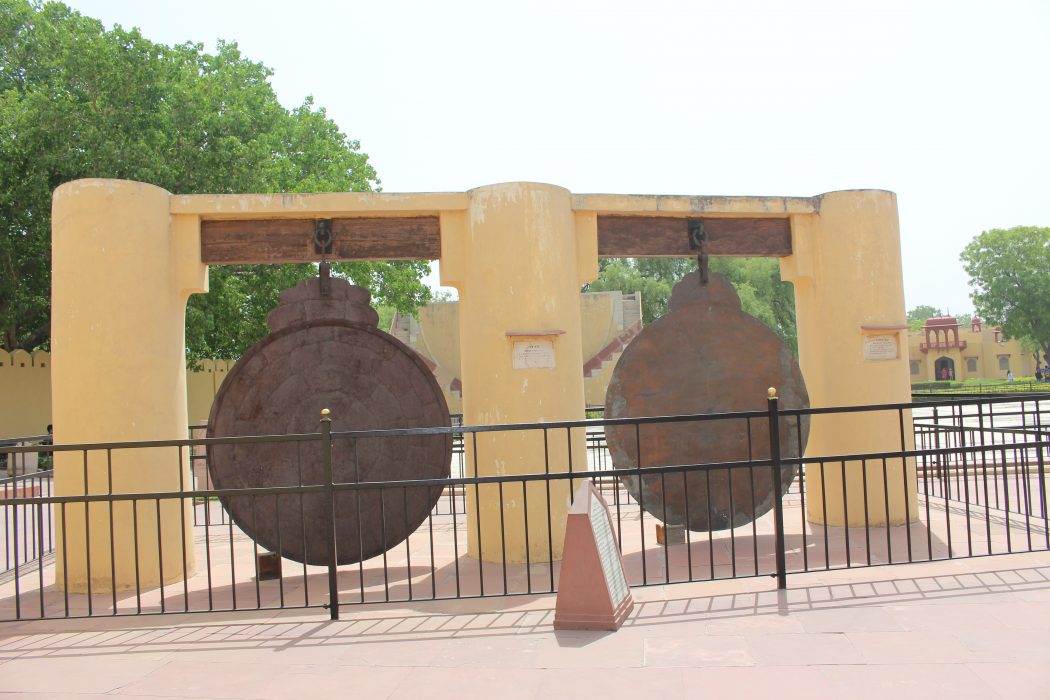 6. Galta Monkey Temple
6. Galta Monkey Temple: a newer temple built on ancient land that looks like a palace, honours the Hindu Monkey God. Many monkeys dwell here. Local Hindus come to swim in the water that flows from the mountains, and it provides tranquility from the city.
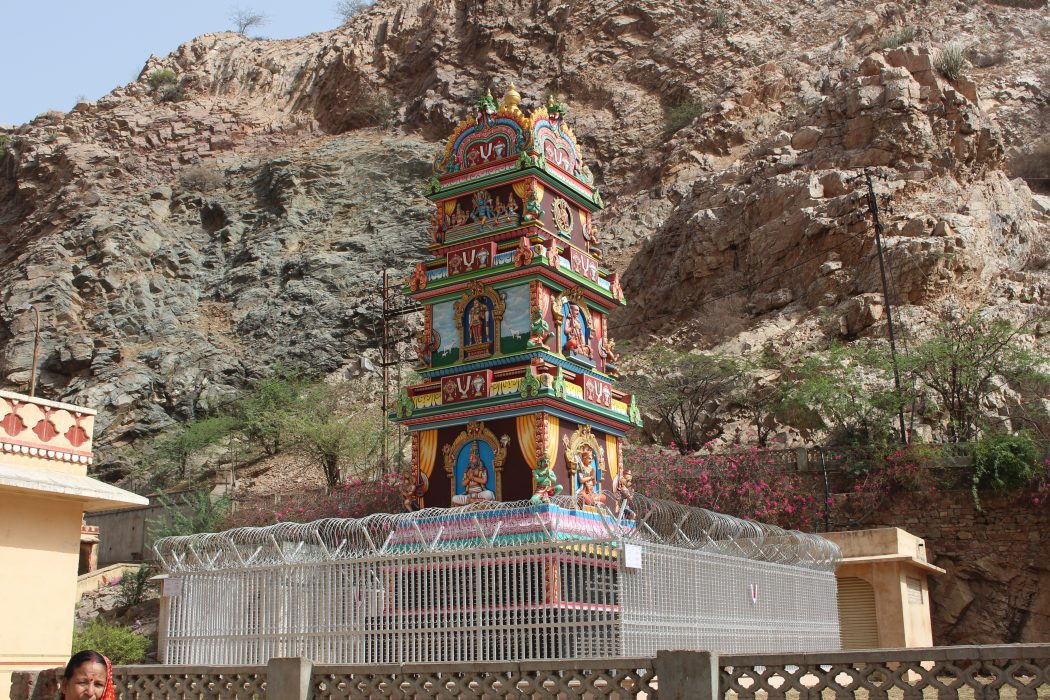
Accommodations provided courtesy of
Samode Haveli; arrangements for land transportation and guide provided by
Vasco Travel.
Shannon Skinner is a television and radio host, speaker and author, and occasionally writes travel articles at http://www.ShannonsSkinner.com.